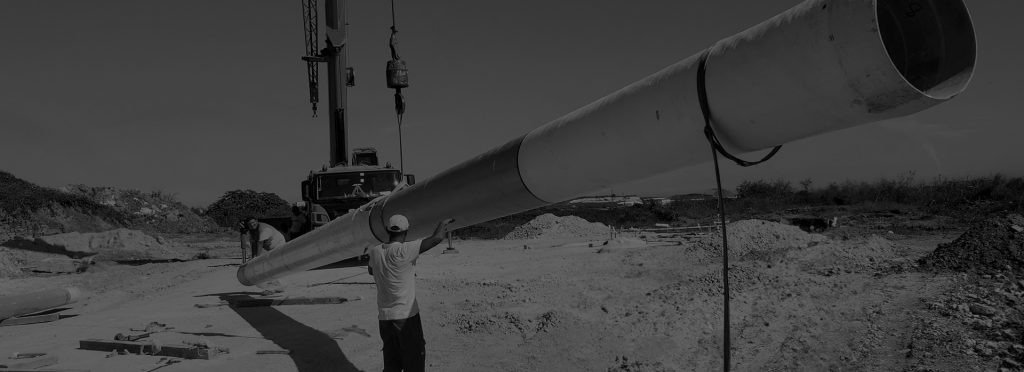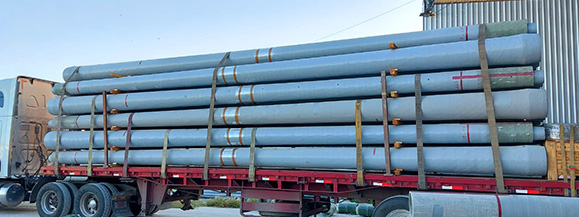Composite poles—also called fiber-reinforced polymer (FRP) poles—represent a major step forward in modern infrastructure for electricity distribution, telecommunications, and public lighting.
As climate change increases the frequency of extreme weather events, as utilities strive for more reliable networks, and as cities demand longer-lasting, low-maintenance solutions, composite poles emerge as an innovative and cost-effective alternative to wood, concrete, and steel poles.

What Are Composite Poles?
Composite poles are made from fiber-reinforced polymers (FRP)—a combination of continuous fibers (typically fiberglass) embedded in a polymer matrix (like epoxy, polyester, or vinyl ester resins). This unique composition delivers strength, lightweight properties, and resilience against environmental stress.
They’re sometimes referred to as FRP utility poles, reflecting their widespread use in power distribution and telecommunications.
How They Differ from Traditional Materials
- Wood: Long used in distribution networks, but prone to decay, insect attack, and chemical treatment needs.
- Concrete: Durable but extremely heavy, difficult to transport, and subject to cracking or internal corrosion.
- Steel: Strong, but conductive and highly vulnerable to corrosion without costly coatings.
Composite poles, in contrast, combine strength, light weight, corrosion resistance, and dielectric properties in one solution.
Advantages of Composite Poles
Lightweight and Easy to Install
Composite poles can weigh a fraction of comparable concrete or steel poles. That translates into easier transportation, faster installation, and reduced need for heavy equipment—especially in hard-to-access areas.
High Strength and Durability
Despite being lightweight, composite poles withstand mechanical loads, wind forces, and impact exceptionally well. Field tests and real-world events show that FRP poles can survive hurricanes, ice storms, and extreme conditions where traditional poles fail.
Environmental Resistance
Composite poles shine in harsh environments:
- Immune to corrosion, rust, and rot
- Resistant to moisture and humidity
- Protected from UV damage with proper coatings
- Unaffected by termites, fungi, and birds
- Durable against chemicals, salt spray, and acid rain
This makes them ideal for coastal, industrial, or tropical applications.
Electrical Safety
Unlike steel, composite poles are non-conductive, which reduces risks of electrical faults, arcs, or accidents in energized environments. This dielectric property adds a layer of safety for workers and communities.
Low Maintenance and Long Life Cycle
Composite poles require minimal maintenance. Many manufacturers assure you a better life cycle, significantly outlasting wood, concrete, or steel alternatives. The result: fewer replacements, fewer outages, and reduced long-term costs.
Adaptability in Extreme Environments
From remote mountain villages to salty coastal roads, composite poles provide a flexible solution where traditional materials struggle. Their lightweight nature even allows installation via helicopter or drone in places with no road access.

Applications of Composite Poles
Power Distribution and Transmission
FRP poles are gaining traction in power distribution networks, especially in regions exposed to extreme weather. Their resilience reduces outages and replacement costs after storms.
Public Lighting
Composite poles are widely used in urban lighting, parks, and roadways. They can be customized aesthetically with colors and finishes while offering long-term durability.
Telecommunications
From supporting fiber optic lines to hosting small 5G antennas, composite poles provide a lightweight and corrosion-resistant backbone for modern communications infrastructure.
Special Projects
They are ideal in corrosive, humid, or remote environments—coastal towns, mountain villages, industrial zones, and rural electrification projects.
Case Studies and Future Trends
Proven Resilience
Utility reports show composite poles surviving hurricanes and ice storms where wood and steel poles failed. Their elastic behavior helps them withstand impact without catastrophic collapse.
Life Cycle Advantage
While initial costs are higher, studies indicate composite poles significantly outlast traditional options, offering a much longer service life with fewer replacements. This extended durability is a key driver for adoption.
Innovation in Materials
Research is ongoing in nanotechnology, advanced resins, and hybrid fiber systems to further increase strength, fire resistance, and service life. Tailored fiber placement is being explored to reinforce high-stress areas with surgical precision.
Conclusion
These types of poles represent more than just an alternative—they’re a future-proof solution for infrastructure that demands strength, safety, and long-term reliability. Their unique combination of durability, low maintenance, and adaptability makes them an excellent choice in environments where traditional poles simply don’t hold up.
If you’re considering them for your project, remember to:
- Compare life cycle costs rather than upfront price.
- Verify certifications and test data from the supplier.
- Assess logistics and local availability.

 Eléctrica
Eléctrica
 Telecomunicaciones
Telecomunicaciones
 Alumbrado público
Alumbrado público
 Hidráulica
Hidráulica

